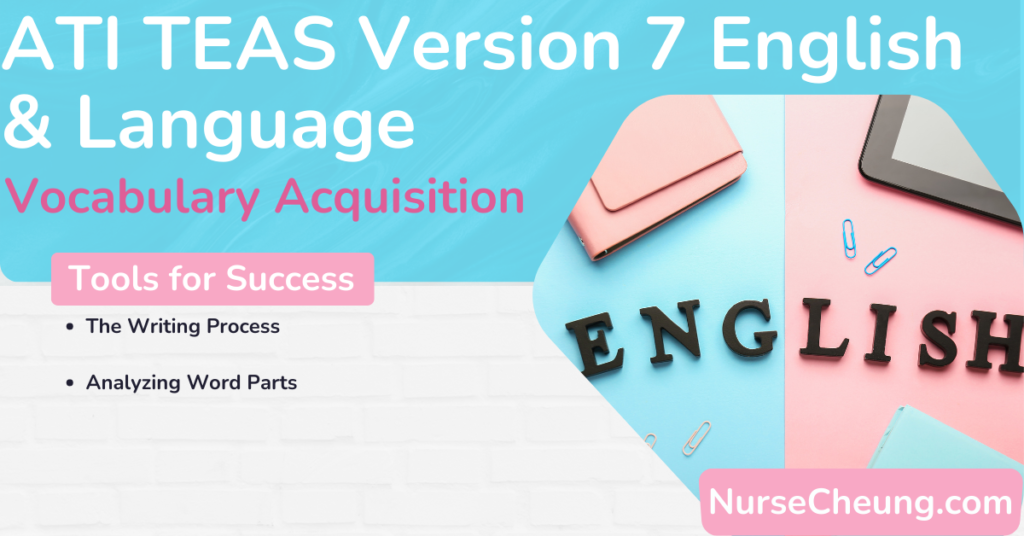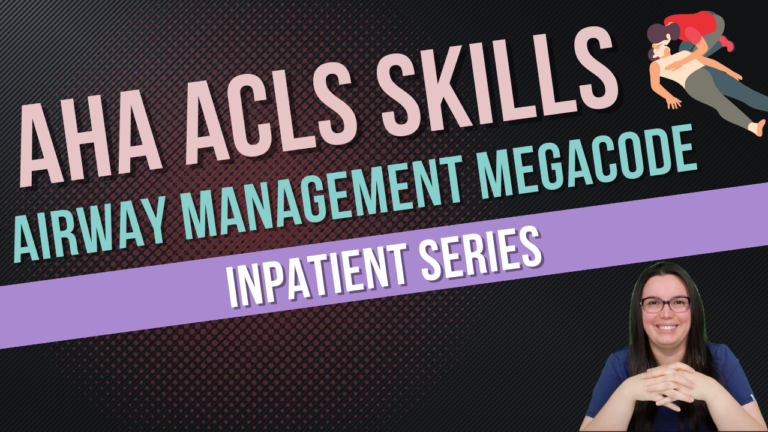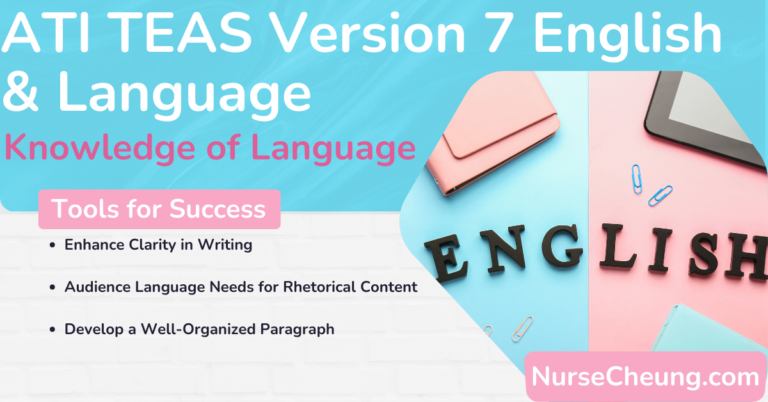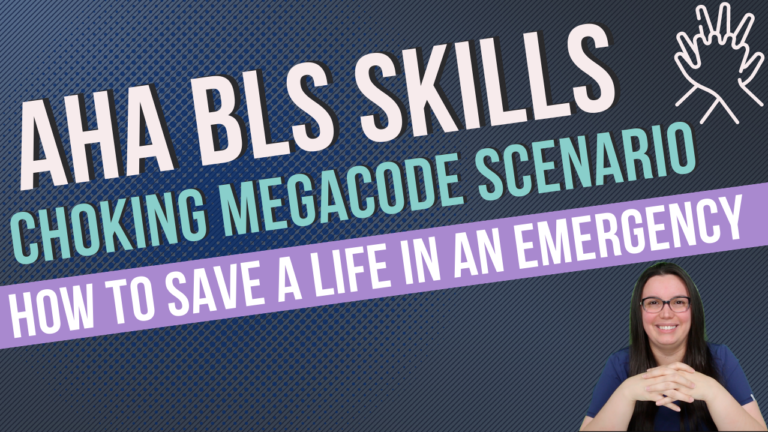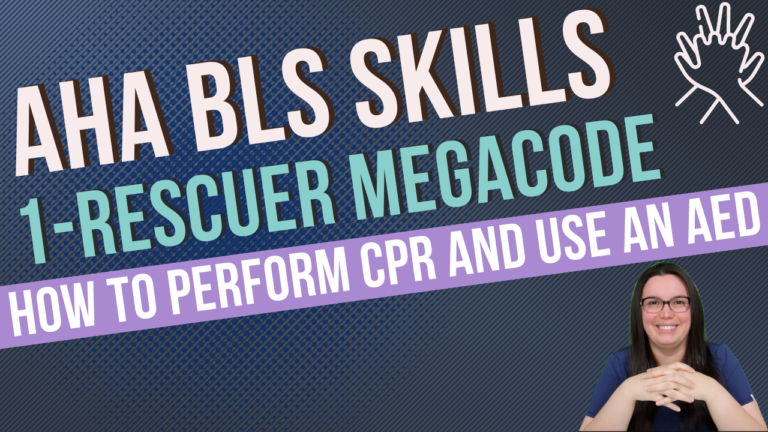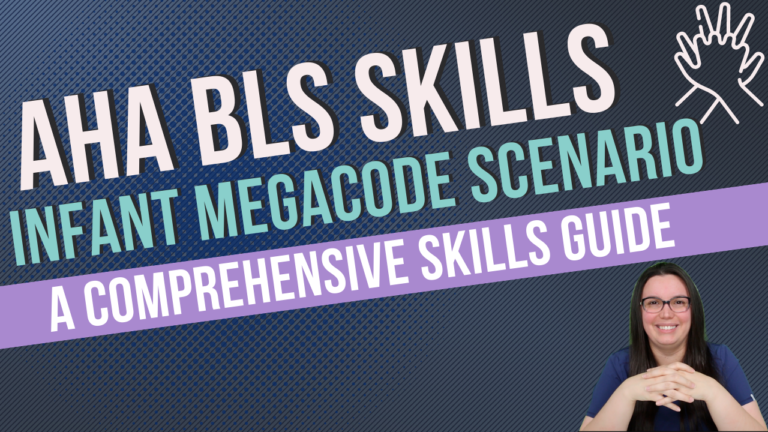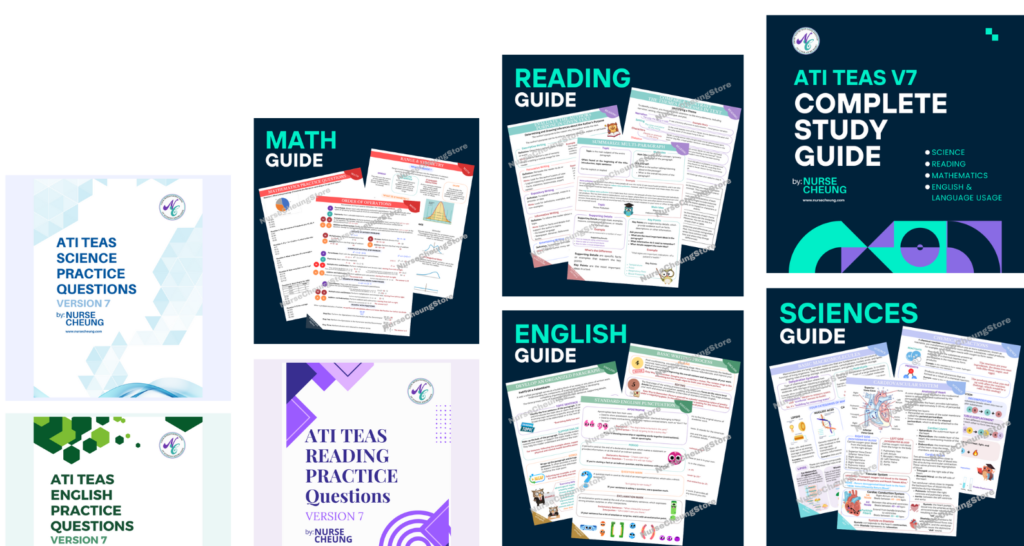In order to do well on the ATI TEAS English & Language Usage section, it is important to understand and be able to use vocabulary correctly.
This blog post will discuss some of the most important aspects of vocabulary acquisition and provide tips for how to improve your understanding and usage of words.
Follow these tips and you’ll be sure to ace the English & Language Usage section of the ATI TEAS!
Objectives for Conventions of Vocabulary Acquisition
Total scored items on ATI TEAS: 10 questions out of 33
Apply Basic Knowledge of the Elements of the Writing Process to Communicate Effectively
Steps in the Writing Process
Each step of the writing process is important in order to produce a well-written piece. There are five steps to the writing process: prewriting, writing, conferencing, revision, and editing. The ATI TEAS will expect you to be knowledgable in each of these steps.
Prewriting
Prewriting is the process of planning and brainstorming for a piece of writing. This is where you come up with your ideas and decide what you want to write about.
There are many different prewriting techniques that you can use, such as brainstorming, stream-of-consciouness writing, and mind mapping.
- Brainstorming is when you come up with ideas by brainstorming with yourself or with a group.
- Stream-of-consciousness writing is when you just start writing without stopping to think about what you’re going to write.
- Mind mapping is when you create a visual map of your ideas.
Writing
Once you have a plan and some ideas, it’s time to start writing! This is where you will take all of your prewriting and turn it into a complete piece.
Remember to keep your audience and purpose in mind as you write.
You will create a piece of writing that includes the introduction, body paragraphs, and conclusion.
Each paragraph must state a main idea and develop that main idea through supportive details.
Remember to cite any borrowed information.
Conferencing
Conferencing is when you talk to someone else about your writing, usually a teacher or tutor.
This is a good time to get feedback about your ideas, organization, and development.
Your conferencer can also help you with grammar, spelling, and other conventions of standard English.
Revision
After you have written a complete draft and received feedback, it’s time to revise your piece.
This is when you make changes to your writing based on the feedback you received.
You might add, delete, or rearrange information in your piece.
You might also change the way you develop your ideas or the way you organize your ideas.
Editing
After you have made all of the changes you want to make in the revision stage, it’s time to edit your piece.
Editing is when you check for grammar, spelling, and other conventions of standard English.
It’s also a good time to check for sentence fluency and overall clarity.
Needed Citations
Any borrowed material must be cited in the text of your writing.
This includes information from books, articles, websites, and even people you interviewed.
If you borrowed someone’s idea, you need to give them credit.
If you are quoting someone directly, you need to use quotation marks.
If you paraphrase someone, you still need to give them credit.
Citations usually come at the end of a sentence, just before the period.
Determining the Meaning of Words by Analyzing Word Parts
Prefixes
A prefix is a group of letters that is added to the beginning of a word to change its meaning.
For example, the prefix “un-” can be added to the word “happy” to create the word “unhappy.”
Its important to note that prefixes do not change a word’s part of speech.
The word “happy” is an adjective and the word “unhappy” is also an adjective.
Suffixes
A suffix is a group of letters that is added to the end of a word to change its meaning.
For example, the suffix “-ness” can be added to the word “happy” to create the word “happiness.”
Suffixes come in two forms: inflectional and derivational.
- Inflectional is when a suffix is added to a word to show grammatical function but doe not change the essential meaning. For example, the plural marker “-s” can be added to the word “cat” to create the word “cats.”
- Derivational is when a suffix is added to a word to create a new word with a different meaning. For example, the suffix “-ful” can be added to the word “hate” to create the word “hateful.”
A root word is a word that can stand alone as a complete word. It does not need a prefix or suffix to be a complete word.
For example, the root word “happen” can stand alone as a complete word.
But if the prefix “un-” is added, it creates the word “unhappen.”
And if the suffix “-ed” is added, it creates the word “happened.”
How to Determine a Word's Meaning
Once you know the meaning of the root word, it can be easier to determine the meaning of words that contain that root.
For example, the root word “bene” means “good.”
So if you see a word that contains “bene,” like the word “benefit,” you can often determine that it has a positive connotation.
It’s also helpful to look at a word’s prefix and suffix.
Remember that a word’s part of speech can also be a clue to its meaning.
For example, the word “happen” is a verb, which means it’s an action word.
So if you see the word “happen” in a sentence, it’s likely that it has something to do with an action taking place.
Combining Affixes with Root Words
Sometimes more than one affix will be added to a root word. An affix is added to the root word to create a new word with a different meaning.
When this happens, it’s important to determine the meaning of each affix and then combine those meanings to determine the meaning of the new word.
For example, the root word “regret” means “dissappointed over.”
The suffix “-ful” means “having the characteristic or form of.”
And the suffix “-ly” means “in a manner or way indicated by the suffix.”
So when you put all of those together, the word “regretfully” means “having the caracteristic of a regretful manner.”


